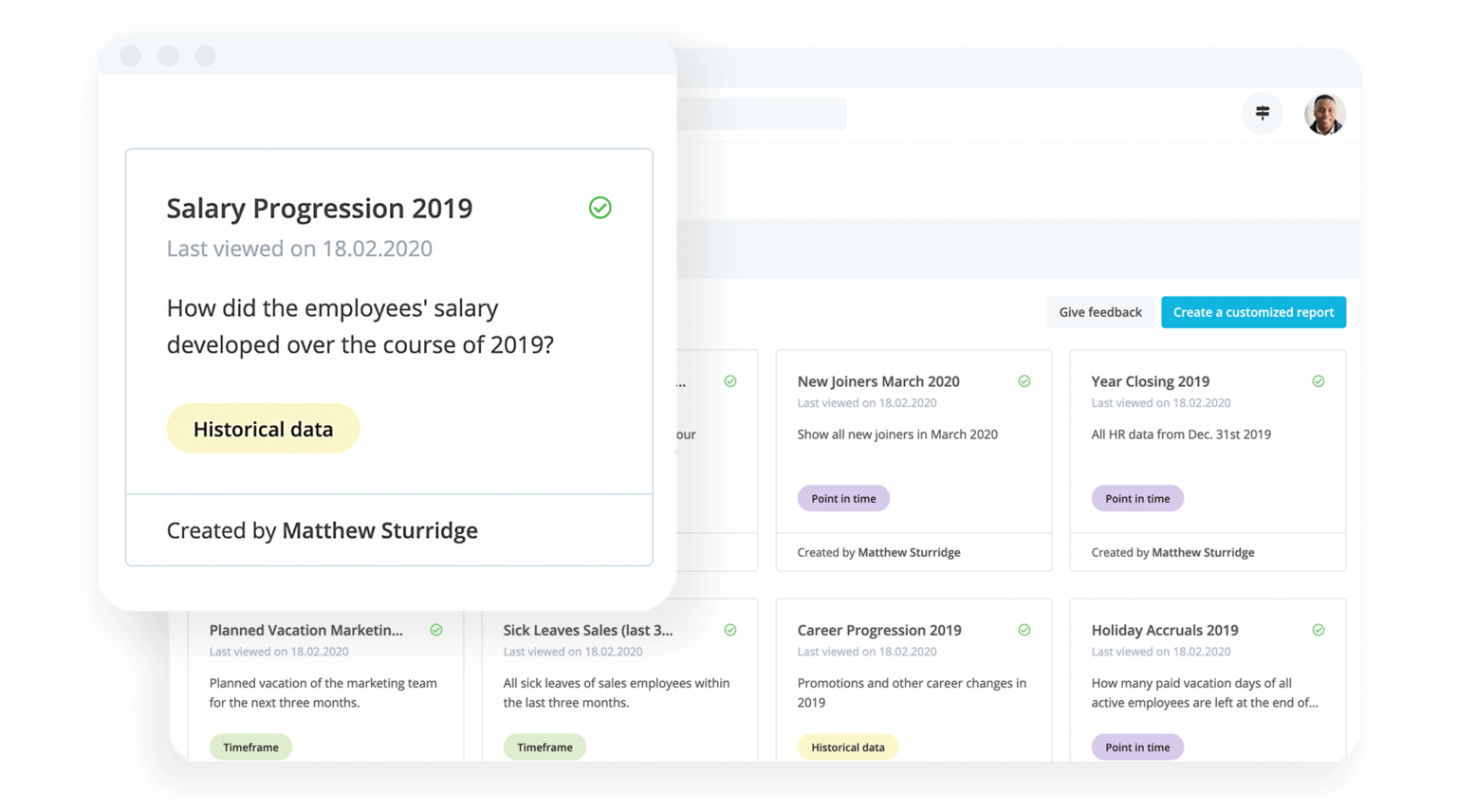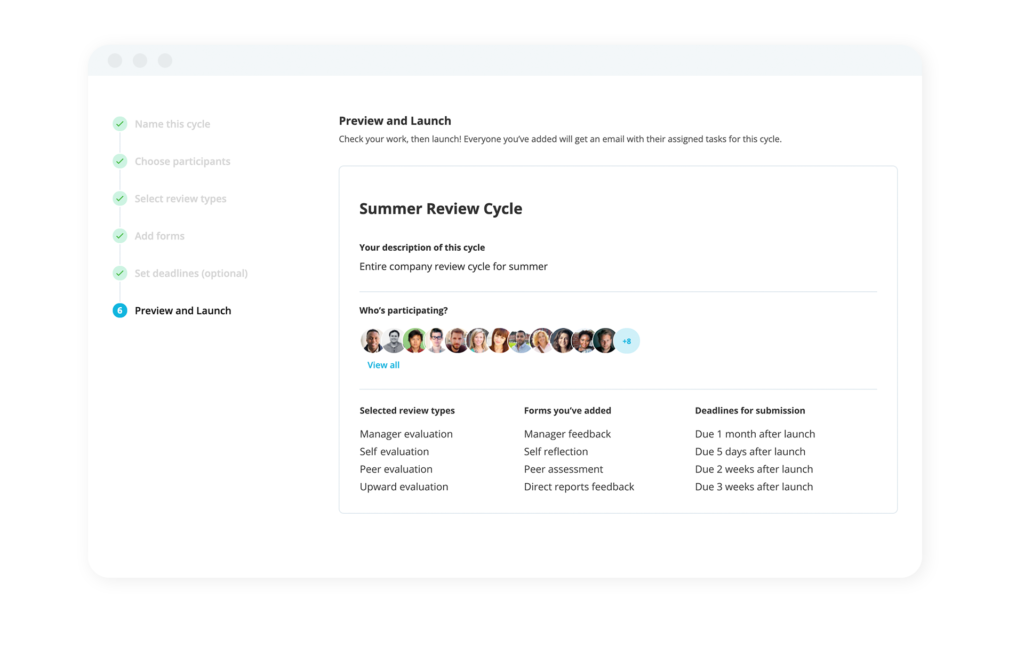
Talent Email Course
A deeper look into winning top talent.
7. March 2022
Four Rules to Drive Retention through Learning & Development

Can employee development drive retention? Many think so! In fact, one study from LinkedIn found that a mind-blowing 94% of employees would stay at a company for longer if the business was actively investing in their career development. It begs the question: Can you supercharge your retention by focusing on learning and development (L&D)?
Ask Ruth Thomas, Head of People & Organisational Development at Personio, and the answer is pretty clearcut: "The way people learn has evolved, and employee development needs to keep up. General training sessions alone simply won't fly anymore".
Let’s dive into why employee development deserves a rethink, and the four rules to live by when it comes to driving retention through development…
Download our guide on performance management to drive retention.Contents
- 1How HR Departments Should Look at Learning & Development
- 2Rule #1: Take Organisational & Learning Design Together
- 3Rule #2: Give Your Employees a Universe of Options
- 4Rule #3: Activate L&D Through Your Leaders
- 5Rule #4: Start With Culture (and Not Another Training Session)
- 6Retention Through Long-Term Relatability
How HR Departments Should Look at Learning & Development
‘Great Resignations’ aside, the struggle to hold onto top talent is real. According to research from Avado, 1 in 4 (26%) of young workers in the UK say the reason they are thinking of resigning is the need to gain more future-oriented skills.
That said, this kind of issue knows no age. But, if any potential solution is to come from focusing on L&D, is the current way of thinking about the subject going about it the right way?
Let’s turn to Ruth for some clarity: “For me, I actually don’t love the term L&D. I think it’s too limiting in terms of scope. When I think about it, I think of L&D in terms of both people and organisational development”.
“Development can take many guises. It’s about understanding where you are as an organisation, where your talent is and how you effectively bridge that gap.” – Ruth Thomas
Ruth’s argument is that L&D’s partnership with organisational development has evolved, becoming a strategic thought partner with management. This means that, while traditional training is still relevant, many organisations focus solely on “learning” and not development – resulting in L&D efforts being more performative than effective.
Ruth recommends four rules when it comes to learning management systems and building a meaningful L&D program to unlock higher retention across your org…
Rule #1: Take Organisational & Learning Design Together
How would you rate your org’s L&D efforts? One study found that employers are twice as likely as employees to rate their learning and development (L&D) programmes as satisfactory.
That’s a fairly sizable rift between the quality of what orgs think they’re offering, and what employees are actually experiencing.
Ruth’s advice would be to take organisational design and allow it to dictate learning design. In practice, the steps are as follows:
Think about which skills your organisation values the most (they could be related to your product, customer service or anything core to your work).
Make the importance of those core skills tangible to your workforce. Use large meetings to emphasize why they matter and hold training sessions based on them.
After you have laid that foundation, allow your learning design options to expand on the core skills you care about (and offer those options to employees – more on that later).
Ruth explains: “This helps to create an ecosystem where people actively ‘opt-in’ to learn. You offer employees the opportunity to ‘create their own adventure’ in terms of the mix of which learning opportunities you value and which they value”.
Best Practice
Foundationally, employees are keener to ‘opt-in’ when your org has:
A growth mindset
– An organisation needs to give employees the leeway to take chances, fail and get better at what they do. Leaders, especially, need to be comfortable at giving and managing those ‘first chances at failure’.
A true culture of feedback
– A learning culture can only thrive when feedback is given well and taken well. It can take a lot to reach that point, but a culture of feedback amplifies almost every learning and development initiative.
“It takes time for people to see feedback as fuel and something that is going to help them do better tomorrow, and not as an evaluation of them as a human being.”
Focus on Your Top Talent With Strategic Performance Management

Personio offers a single place to focus on your top talent. Find out more by clicking below.
Focus On Performance With PersonioRule #2: Give Your Employees a Universe of Options
Recognising L&D’s evolved role as a more holistic function of HR is key. Teams need to be empowered to pull things together, to see the entire organisation’s ‘talent landscape’ and to find ways to activate a growth mindset and feedback culture.
Ruth explains: “Traditionally, L&D were the people coordinating and offering training sessions. Now, we are building an ecosystem where learners can drive their own careers. Getting employees to opt-in is not only valuable from an engagement perspective, but it’s almost essential to get good L&D going while fostering a sense of ownership and true learning culture – where ongoing development is seen as a staple of great work”.
As we saw from earlier data points, that kind of active or latent desire for development is key to keeping employees around. Chances are, in your organisation right now, your talent wants those opportunities, so getting them to ‘opt-in’ hinges on catering to their needs.
“The major shift has been accounting for how people learn, and then blending that into the day-to-day work experience or career journey.”
On a daily basis, how might that look? Ruth recommends blending the kinds of traditional learning experiences (those that back up the core competencies that your org values) with more scalable complements, such as:
Mentoring or reverse mentoring
Buddy programs
Job shadowing or job rotation
Internal or external coaching
Development may also look like stretch opportunities (additional responsibilities that push people in their roles), cohorts with real business problems or reverse onboarding (feedback sessions that help recruits challenge existing processes).
Rule #3: Activate L&D Through Your Leaders
Development, and subsequently retention, are driven from the very top. So, start with your leaders, who are amplifiers to any organisational effort.
“Senior leaders need to act as role models to activate L&D initiatives. Often, the challenge with L&D is that people don’t have the time. They know it is important, they want to do it, they craft the plan but then it goes into a folder and doesn’t appear again”.
From leaders to line managers, they need to find ways to build that time into their team’s day-to-day activities, as well as in their performance growth conversations, while also doing it themselves, too. Setting the example alone can be critical for retention.
Additionally, activating your leaders can be done through:
Growth Cycle Frequency – Focusing on the timing and quantity of conversations and how often leaders can be expected to speak on employee development.
Performance Conversation Quality – Designing conversations that enable leaders to coach employees, and allow employees to steer their own career journey.
Leadership Skills Training – L&D has a role here in offering training specifically catered to leaders, to help them gain the skills they need to develop their teams.
For our full guide to developing leaders, follow this link.
All Your People Data to Power Decisions

Run custom reports on your entire workforce with Personio. Click below to see it in action.
HR Analytics With PersonioRule #4: Start With Culture (and Not Another Training Session)
How do you go from zero to one hundred on your retention efforts? Ruth recommends starting with your culture, relying on employee listening and leaving with a sense of ‘being stretched’ that helps employees ‘feel’ their development most.
Best Practice
A culture of feedback and development underpins everything. Your organisation needs to define what development looks like in context. It’s not simply a once-a-year course or workshop, but continuous learning bolstered by feedback.
“There is always more improvement when it comes to feedback. I think creating that psychological safety where we can do feedback well is crucial”, Ruth advises.
Then comes employee listening strategies:
The First Steps – Many organisations may already have this covered – engagement surveys, onboarding, and exit surveys.
The Time In Between – A lot happens apart from these first touchpoints. Listening should happen in pulse surveys, impromptu feedback, staff interviews, and more.
Data On Data – Taking that qualitative data (like interview feedback) and overlaying it on data points (like early turnover or regretted attrition) can uncover a lot.
Last, but not least, it’s about helping your employees ‘feel developed’. Learning is about not only taking in new knowledge, but new experiences, and sometimes these added responsibilities and challenges can feel uncomfortable for employees.
But, the result is that employees feel stretched to become better at what they do. And, in turn, they feel their development in the context of your org’s commitment to their development.
“To me, the definition of learning in an organisation is having employees ask themselves one question: ‘At some point today, did I feel stretched?’”
Retention Through Long-Term Relatability
The rules Ruth outlines are a starting point. They are a way to not only rethink your L&D efforts, but the potential those efforts have when it comes to helping employees develop, perform better than ever and stick around for the long-term. Together, it can be a win-win on all fronts.

